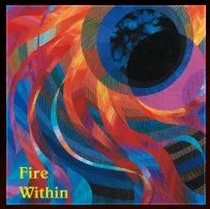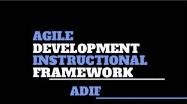Suddenly, the bass section broke out in full, boisterous song. After they finished, I said, “That was great! what were you singing?” They all heartily replied, “The Wellerman,” with a few Arrr’s thrown in for effect.
It was the beginning of the school year, and each section of the choir was working on their Skills Quests. The bass section was looking through the Musical Skills Quest Item List and deciding what items they were going to learn and perform for the choir. The bass section chose item #1 – Sing a Sea Shanty.
What really caught my attention was their enthusiasm and how strongly and boldly they sang. Masks and all! With great eagerness, they proceeded to show me The Wellerman TikTok mashup and other sea shanties they discovered online.
And thus, the theme of rediscovering strong, healthy, full singing was born.
Re-envisioning Masks
The first step to helping our choir members rediscover their voice is to teach them how to sing and communicate safely through a mask. At first, the masks were seen (and felt) as a huge obstacle and a total interference to choral music. And they most definitely still are. But now, my students are so happy to be back together singing that the masks have almost become a non-issue. They have learned how to adapt to the pandemic singing regulations and move forward healthily and safely.
In September 2020, my sister-in-law Susan Butterfoss, an ASHA Certified Clinical Speech-Language Pathologist, and I co-authored a Leading Voices post titled Teaching and Singing While Wearing a Mask: Why it is a Challenge and How to Make it Better. Through our research, we uncovered four areas in which PPE masks negatively affect spoken and sung communication.
1. Reduced Decibel Levels
2. Attenuated Frequencies
3. Diminished Word Boundaries
4. Blocked Facial Cues
Each specific area of concern may not seem too discouraging on its own. Still, when they come together, they can create a loss of quality and enjoyment of sung and spoken communication. Our collaboration produced several recommendations to compensate for the mask. These include slowing speech rate, attending to articulatory markers that identify word boundaries, and augmenting our spoken instruction with visual aids. Susan also created the following handouts for you and your students.
Re-envisioning Voice Lessons
Just before the pandemic hit, I discovered an excellent website called Voice Science Works. I have this website bookmarked and refer to it daily during my voice lessons. On the Voice Science Works home page, you will find many great resources ranging from Warm-up Exercises and Handouts to their Vocology Toolbox. Currently, I am using the following Vocology Toolbox links and focusing on the basic singing skills of posture and breathing, vocal production, and back pressure (SOVT Exercises).
Voice Science Works is an excellent resource and a must for all vocal instructors. It is helping me build momentum back into voice lessons by motivating and inspiring my students to produce good, quality singing and appreciate their voices. Also, take a few minutes and check out the Pink Trombone. It’s a lot of fun, and the students love it.
A Few Voice Science Works Publications:
Seven Essential Voice Science Tools for Choral Singing, Choral Journal:2019
The Voice Teacher’s Cookbook, Contributing authors 2018
The Unfiltered Source, Publishers, 2016
Re-envisioning Rep
My biggest curricular shock of the year was re-envisioning and selecting the appropriate repertoire. I never fully understood the educational and performance momentum we create with our ensembles as we move through our curriculum and a year of concerts and music festivals. I have found that building and sustaining a new energy and drive this year to be a very challenging experience.
My 9/10 Treble Choir took the biggest hit in membership, vocal ability, and musical understanding over the past two years. This ensemble traditionally has about 25 students and performs level 3-4 SSA rep. This year, we are down to 11 soft-spoken students at a 7/8 grade ability level and are working on unison, 2-part, and some basic 3-part music. I also lost about twenty percent of the 9-12 SATB Concert Choir, but luckily, the auditioned 9-12 Select Choir roster remains at twenty-four.
All my ensembles are now about two years behind in their vocal skills, music reading abilities, and rehearsal/performance etiquette. The pandemic has shaken me out of my self-inflicted belief that each concert must be better and more musically impressive than the previous performances. This year we are focusing on quality repertoire that I hope will motivate and encourage strong, healthy, and full ensemble singing. Here is an example of some of the music we are currently studying.
Be Like a Bird Libana, from their album Fire Within.
A Girl’s Garden, Randal Thompson
Simply Gregorian, Arr. Donald Moore
Dormi, Dormi, O Bel Bambin, Arr. Robert DeCormier
All For Me Grog, Arr. Stephen Hatfield
City Called Heaven, Arr. Josephine Poelinitz
Stodola Pumpa, Arr. Mark Weston
Tshotsholoza, SATB Adaptation by Jeffery Ames
Smile, by Charlie Chaplin, John Turner, and Geoffrey Parsons, Arr. Ben Bram
Re-envisioning Instruction
The most beneficial resource I have found to help my students rediscover their singing voice and rebuild the vocal music program is the work and support of my colleagues. This fall, I have spent a lot of time going over my old notes from observing past music festival rehearsals, reviewing conference workshop materials and reading sessions, and professional reading.
Through my work, I have rediscovered many long-lost instructional gems and teaching resources that are now revitalizing my teaching. The experiences and effects of the pandemic on my students and the music program continue to be challenging and frustrating. Yet through this adversity, I have experienced several positive outcomes and a few paradigm-shifting experiences. The instructional and performance momentum that was paused can move forward once again as I re-envision my curriculum and rediscover my voice in the classroom.
Re-envisioning Resources
Pass the Baton: Empowering Students in the Music Room
The Improving Musician
Self-Regulated Learning
Self-Directed-Learning
Experiential Learning Theory
Understanding by Design
Cognitive Coaching
Universal Design for Learning
TL;DR Re-envisioning and Rediscovering Singing
I am repeatedly amazed at how my students continue to be adaptive and resilient in the music classroom and during rehearsals. They have an earnest desire, masks and all, to rediscover how to sing confidently together with conviction. What was at first the most devastating part of teaching vocal music through a pandemic – the loss of group singing and learning – has now given my students a new resolve.
I am an advocate of teaching and modeling student agency and self-directed music learning in the classroom. Helping our students rediscover their voice applies to their singing voice as well as their voice as a young person and musician. Promoting student agency in the music classroom and rehearsal setting is a must if we want our students to become and remain musically active and musically self-sufficient throughout their lives.
Agile Development Instructional Framework
Agile Development Instructional Framework (ADIF) Sprints
Purposeful Teaching Through Agile-Centered Instruction
Agile Centered Instruction
Building A Community of Practice
By Teaching We Learn – Students Teaching Students
Promoting Student and Ensemble Autonomy: The Individual Ensemble Musicianship Project:
Oh, Now I Get it! – Understanding Threshold Concepts







Leave a Reply
You must be logged in to post a comment.